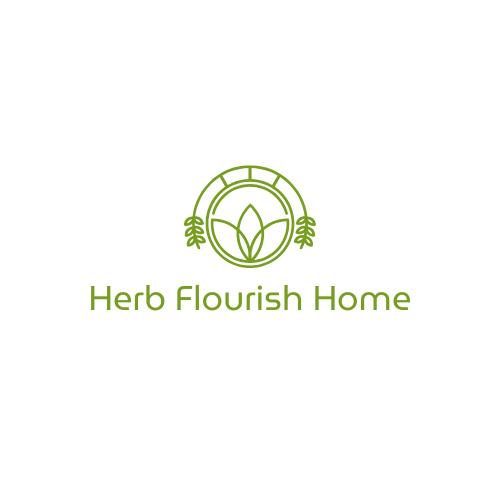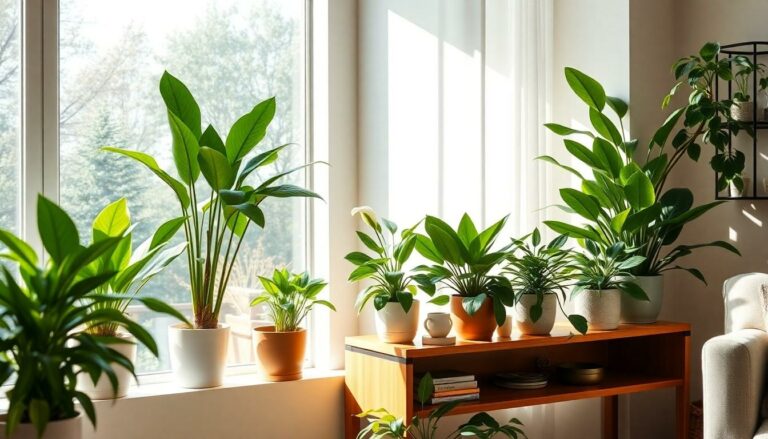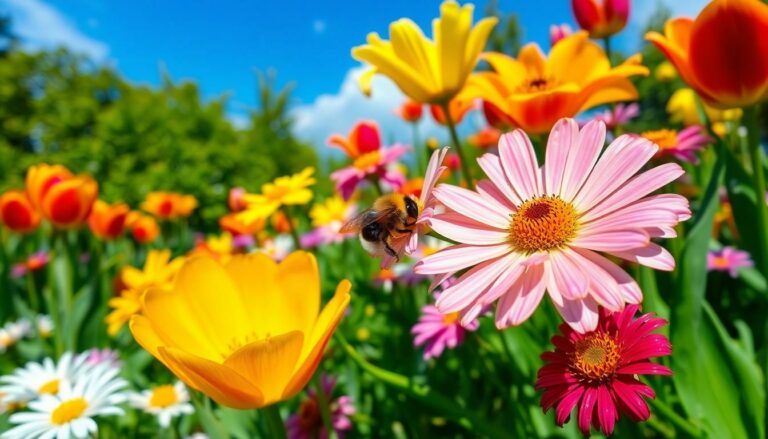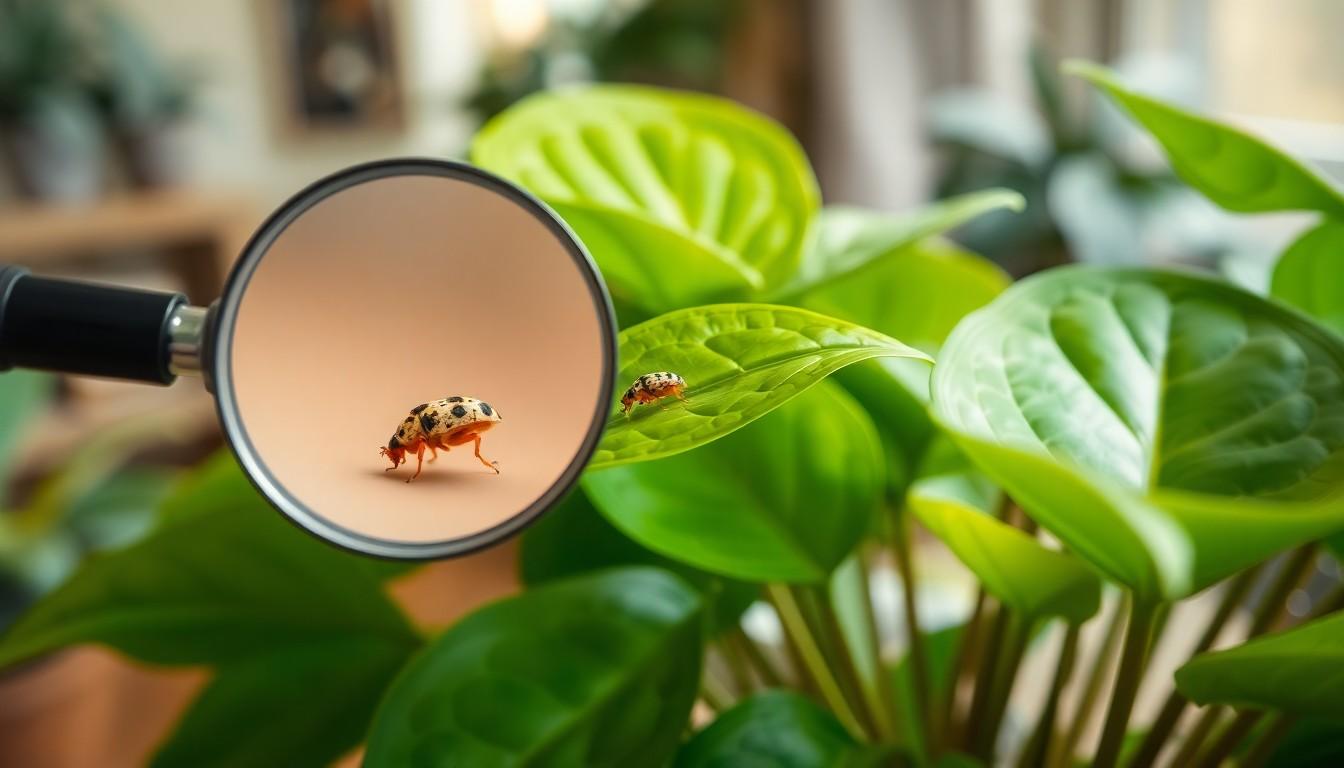
Indoor Plant Pests Identification Pictures: Spot and Defeat Common Invaders Today
Indoor plants can be a source of joy and tranquility, but they often come with uninvited guests. Picture this: you’re admiring your lush green foliage, only to discover tiny critters throwing a party on your prized pothos. Identifying these pests isn’t just a game of “What’s That Bug?”—it’s essential for keeping your plants healthy and thriving.
Overview of Indoor Plant Pests
Indoor plants often attract a variety of pests, making identification essential for proper care. Common pests include aphids, spider mites, fungus gnats, and mealybugs. Aphids appear as small, pear-shaped insects and can be green, black, or brown. Their presence leads to stunted growth and yellowing leaves.
Spider mites may not be visible without a magnifying glass. Tiny dots on the underside of leaves signal their presence. These pests produce fine webbing, which indicates an infestation. Affected plants often display discoloration and leaf drop.
Fungus gnats typically hover near the soil surface. Their larvae feed on plant roots, creating a weakening effect. Symptoms include yellowing leaves and poor growth. In contrast, mealybugs, resembling small white cottony masses, usually congregate in leaf joints. They cause leaf drop and overall decline.
Regular inspection helps catch these pests early. Maintaining clean foliage and monitoring humidity levels can prevent infestations. Proper identification is key to applying effective treatment. For example, insecticidal soap works well against soft-bodied insects like aphids and mealybugs.
Also, neem oil provides a natural solution for various pests, while debris-free soil decreases fungus gnat breeding. Understanding these pests enhances a gardener’s ability to nurture healthy indoor plants. Each type of pest poses unique challenges, but an informed approach ensures successful plant care.
Common Indoor Plant Pests
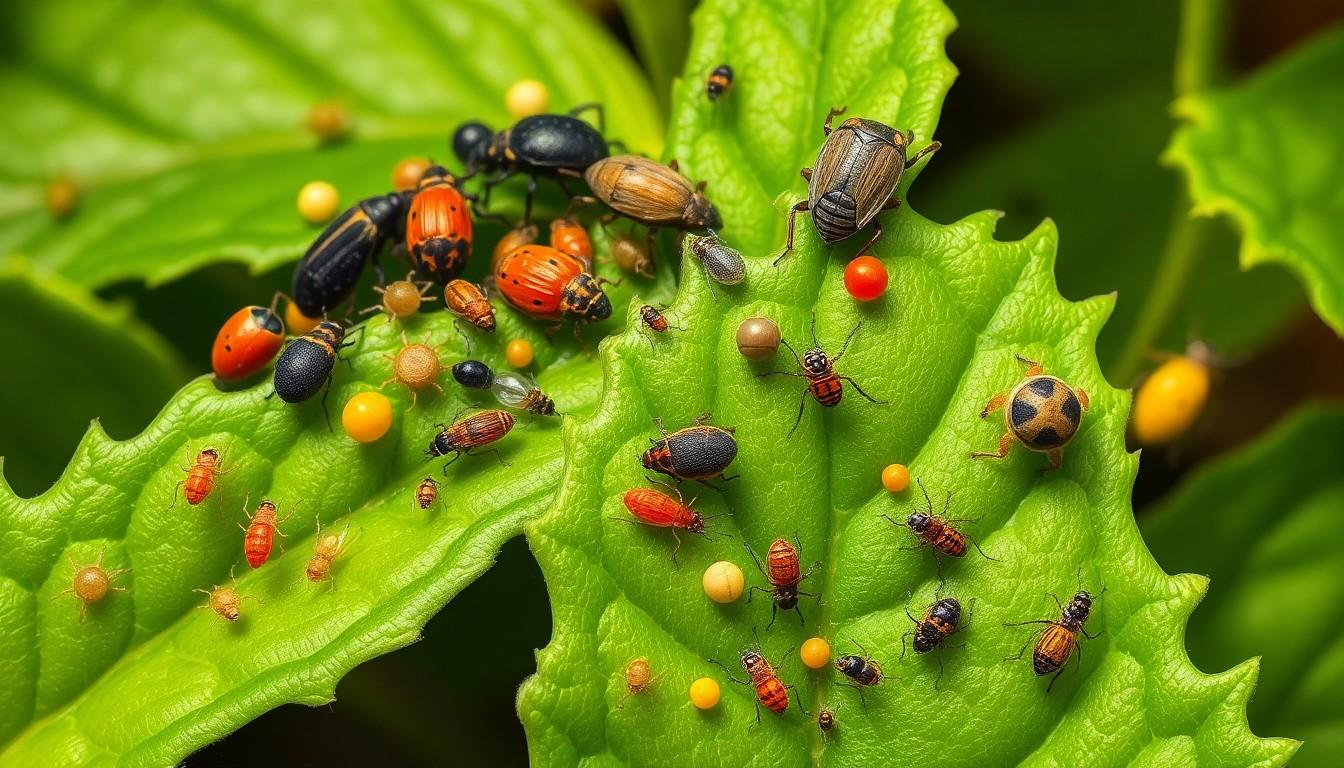
Indoor plants can face various pest problems that impact their health. Identifying these pests early ensures effective treatment and helps maintain vibrant foliage.
Aphids
Aphids are small, soft-bodied insects that often cluster on young shoots and leaves. They exhibit colors ranging from green to black. Damage includes curling leaves and stunted growth due to sap extraction. Regular inspections can catch infestations early, while insecticidal soap or neem oil effectively eliminates them.
Spider Mites
Spider mites thrive in dry conditions, producing fine webbing, especially under leaves. Their coloration varies, with most being red or green. They cause yellowing and speckling of leaves, indicative of feeding. Increasing humidity and applying miticides or insecticidal soap help manage these pests effectively.
Mealybugs
Mealybugs appear as white, fluffy masses, often hiding in leaf joints and on stems. These pests suck sap from plants, leading to yellowing leaves and possible dieback. Regular cleaning and the application of neem oil or rubbing alcohol can control and deter infestations.
Scale Insects
Scale insects present as small, immobile bumps on stems and leaves. They range in color and shape but often resemble tiny shells. Feeding on plant sap reduces vigor and can lead to die-off. Treatment options include scraping them off manually or using horticultural oil for effective management.
Identification Techniques
Identifying indoor plant pests involves keen observation and specific techniques. Utilizing visual cues and magnification can significantly enhance pest detection.
Visual Indicators
Discoloration on leaves often signals pest activity. Yellowing can indicate spider mites or nutrient deficiencies. Stunted growth usually results from aphid infestations. Observing small, white, cottony clusters may reveal mealybugs. Black sooty mold often appears due to honeydew secreted by aphids. Checking for webbing, especially on undersides of leaves, points to spider mites. Identifying these signs early aids in effective control measures.
Using Magnification
Using a magnifying glass offers a closer look at pests. Inspecting leaves and stems reveals insects often invisible to the naked eye. Observing the texture and movement of pests becomes easier. Mealybugs and scale insects, for instance, exhibit distinct characteristics when magnified. Employing an insect-identifying app may further assist in accurate pest identification. Taking high-resolution photographs can provide clarity and enable better recognition later. This attention to detail promotes healthier indoor plants by ensuring timely intervention.
Importance of Accurate Identification
Accurate identification of indoor plant pests is crucial for maintaining healthy plants. Misidentifying a pest can lead to ineffective treatments, causing further damage to plants. Identifying pests early allows for prompt intervention, which can prevent widespread infestations.
Common signs of pest presence include discoloration on leaves, webbing, or unusual growth patterns. Observing these indicators helps determine the specific type of pest affecting the plant. Using a magnifying glass enhances visibility and reveals pests that may not be immediately noticeable.
Additionally, employing insect-identifying apps provides a quick resource for accurate pest recognition. Taking high-resolution photographs can also aid in identifying pests by comparing them with database images. Engaging in regular inspections promotes awareness of a plant’s condition, making it easier to catch issues before they escalate.
Utilizing proper identification techniques empowers gardeners to choose the right treatment methods. Choosing specific solutions, such as insecticidal soap for soft-bodied insects, depends on accurate pest identification. Knowing the distinct characteristics of pests like aphids and spider mites enables gardeners to effectively combat their specific threats.
Consistent monitoring and prompt identification play vital roles in fostering the overall health of indoor plants. Well-informed gardening decisions stem from understanding which pests pose risks to plants. A diligent approach to identifying pests ultimately contributes to the vibrancy and longevity of indoor greenery.
Control Methods
Effective control methods exist to manage indoor plant pests, focusing on cultural practices, chemical treatments, and the use of natural predators.
Cultural Control
Maintaining a clean environment plays a vital role in controlling indoor plant pests. Regularly removing dead leaves, debris, and dust prevents pest habitats from forming. Providing adequate spacing between plants enhances air circulation, reducing humidity levels that many pests prefer. Watering plants properly limits excess moisture, which attracts certain pests. It’s essential to monitor soil moisture and avoid over-watering. Using sterile soil and pots prevents pests from entering the indoor environment. Regular inspections foster awareness of emerging pest issues.
Chemical Control
Chemical options for pest management offer a direct approach. Insecticidal soaps effectively target soft-bodied insects, while neem oil provides a natural alternative against various pests. Applicators should focus on the undersides of leaves, as many pests inhabit those areas. Always read and follow product labels to ensure safe and effective use. Avoiding high concentrations helps prevent harm to plants and beneficial insects. Targeting pests during their active growth stages increases treatment success.
Natural Predators
Incorporating natural predators adds an ecological approach to pest management. Beneficial insects like ladybugs and lacewings prey on aphids and other soft-bodied insects. Introducing nematodes into the soil effectively targets fungus gnats, reducing their populations. Encouraging biodiversity around indoor plants attracts these natural predators. Providing suitable habitats, such as small shelters, improves their effectiveness in pest control. Regularly observing for the presence of beneficial insects allows for timely interventions when needed.
Conclusion
Identifying indoor plant pests is essential for maintaining healthy greenery. By recognizing the signs of infestations early on, gardeners can take proactive measures to protect their plants. Using the right identification techniques and treatment options ensures that pests are managed effectively.
Regular inspections and a keen eye for detail can make a significant difference in a plant’s vitality. With the right approach and knowledge, anyone can nurture a thriving indoor garden free from the damaging effects of pests. Empowered with this information, indoor plant enthusiasts can enjoy their lush environments with confidence.
